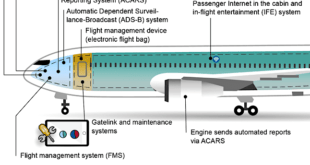Amphibious Aircraft: The Sky-Sea Platforms Transforming Modern Missions
Amphibious aircraft are redefining mobility, enabling rapid-response, defense, and disaster-relief missions across land and water with unmatched versatility.
A New Amphibious Era
Amphibious aircraft—capable of taking off and landing on both land and water—represent a unique fusion of versatility and tactical utility. Though heavier, slower, and more complex than their land-based counterparts, their ability to reach remote, undeveloped, or disaster-hit areas without relying on traditional runways has elevated them to a new level of strategic importance in both military and civil operations. As global maritime tensions intensify and island chains become geopolitical flashpoints, countries like China, India, Japan, and Russia are making significant investments in amphibious aircraft to extend their reach, enhance rescue operations, and assert sovereignty.
Amphibious Aircraft: Dual-Domain Versatility
Amphibious aircraft possess the unique capability to operate seamlessly from both land and water. This is made possible through specially designed hulls and flotation devices for aquatic operations, complemented by wheeled landing gear for terrestrial deployment. However, not all amphibians are equally capable—some are equipped with limited landing gear meant only for towing onto land for maintenance or storage. True operational flexibility requires fully functional landing gear that supports safe takeoffs and landings on conventional runways at the aircraft’s maximum operating weight.
Amphibious aircraft are broadly categorized into fixed-wing and rotary-wing types. Fixed-wing variants are often seaplanes—such as floatplanes and flying boats—equipped with retractable wheels that allow runway operations. While this configuration increases weight and structural complexity, it expands mission versatility. Rotary-wing amphibians, including specially modified helicopters, often feature reinforced bearpaws and retractable landing gear, enabling them to operate on both solid ground and water surfaces.
Some amphibians go further, with reinforced keels acting as skis to facilitate landings on snow and ice. These features allow such aircraft to perform missions in harsh and inaccessible terrains, making them indispensable for both military and commercial operations—particularly in offshore or island regions where conventional runways are unavailable.
Operational Trade-offs and Advantages
The dual-capability of amphibians introduces certain trade-offs. Compared to standard landplanes, they are typically heavier, slower, more mechanically complex, and less fuel-efficient. Nonetheless, this added complexity is balanced by unmatched versatility. While they do not offer vertical takeoff or hover capabilities like helicopters, amphibious aircraft often achieve similar mission goals at a fraction of the operating cost. Their ability to access remote aquatic or unprepared terrain locations grants them an edge in scenarios where no infrastructure exists.
Mission Roles of Amphibious Aircraft
1. Search and Rescue (SAR)
Amphibians are highly effective in peacetime SAR operations—rescuing survivors from crashed aircraft, distressed sea vessels, or evacuating injured personnel from remote ships or coastal areas lacking runways. In combat zones, these aircraft play critical roles in extracting ejected aircrew, retrieving survivors from damaged warships, or supporting the evacuation of Special Forces and sensitive equipment under hostile conditions.
2. Surveillance of Shipping
While conventional fixed-wing and rotary aircraft conduct maritime surveillance, amphibians add the ability to physically land on water. After identifying a vessel from the air, amphibians can loiter, deliver personnel, or provide direct support—capabilities standard aircraft lack. Their utility increases where helicopter deployment is not viable or available.
3. Interdiction Operations
Missions such as anti-contraband, counter-terrorism, anti-piracy, and infiltration prevention typically rely on surface ships or submarines. However, deploying submarines for such roles is an inefficient use of high-value assets. Amphibious aircraft offer a quicker, more cost-effective response. They can operate where no runways exist, quickly interdict targets, and deliver teams directly onto the scene, bridging the gap between air and maritime forces.
4. Anti-Submarine Warfare (ASW)
Historically, amphibians played a major role in ASW, particularly during World War II. While they lack the hover capability of helicopters (which aids in deploying dunking sonars), they compensate with greater payload capacity, speed, and endurance. Modern amphibians can be equipped with advanced sonar buoys, magnetic anomaly detectors (MAD), and torpedoes, giving them a valuable multi-role combat profile.
5. Logistics and Communication Support
Remote maritime regions—such as India’s Lakshadweep and Nicobar Islands—often lack infrastructure for runways. Terrain limitations in parts of the Andaman Islands further complicate airstrip construction. In such areas, amphibious aircraft serve as lifelines, delivering critical supplies, transporting personnel, and ensuring communication continuity. Their ability to land on water enables operations even when ports or runways are unusable due to weather or natural disasters
Global Amphibious Operational Aircrafts
China’s AG600: Maritime Might with Wings
China’s AG600 “Kunlong,” developed by AVIC, continues to break new ground as the world’s largest operational amphibious aircraft. With a wingspan of 38.8 meters and a maximum takeoff weight of 53.5 tons, it is designed for multiple roles: from maritime patrol and firefighting to rapid troop deployment in the South China Sea. The AG600 can carry up to 12 tons of water for firefighting and fly 30 sorties without refueling. Its ability to operate on waves up to 2 meters high makes it ideal for high-sea search and rescue (SAR) operations.
In May 2024, the AG600M (firefighting variant) completed a critical series of sea trials and received Chinese airworthiness certification for emergency rescue missions. Simultaneously, the AG600’s military variant is being adapted for maritime strike roles, with radar and optical sensors to support intelligence and surveillance operations. With 17 units already ordered, the AG600 is also symbolic of Beijing’s intent to dominate key sea lanes in both the South China Sea and the Indian Ocean.
Japan’s US-2: A Proven Champion of Sea Rescue
The ShinMaywa US-2, Japan’s advanced STOL (Short Take-Off and Landing) amphibious aircraft, has long been a benchmark in amphibious aviation. With a range of over 4,500 km, the ability to land in rough seas with 3-meter waves, and capacity for 15 tons of water in firefighting mode, the US-2 has been essential to Japan’s maritime SAR and disaster relief strategy. Its blown flaps and boundary layer control system allow it to take off from as little as 280 meters of sea or land.
In 2023, ShinMaywa announced the modernization of the US-2 with upgraded avionics and a new materials composite to reduce weight and increase endurance. These upgrades, combined with Japan’s recent arms export policy shifts, have brought the US-2 into closer strategic alignment with partners like India and ASEAN nations.
India’s Twin Track: US-2i and Indigenous Amphibians
India has taken a dual approach to amphibious aircraft. On one hand, New Delhi is finalizing a long-pending deal with Japan to procure 12 ShinMaywa US-2i aircraft, estimated at ₹10,000 crore (~$1.2 billion). The Indian Navy and Coast Guard plan to deploy these aircraft for SAR operations, troop transport, and surveillance across the Indian Ocean Region (IOR), especially in the Andaman & Nicobar and Lakshadweep archipelagos.
On the other hand, Hindustan Aeronautics Limited (HAL) is actively developing an indigenous amphibious platform. HAL’s Tactical Aircraft Division in Kanpur has issued RFIs for partners to help convert the Do-228 into a seaplane variant. Simultaneously, conceptual studies are underway for a new amphibious aircraft comparable to China’s AG600. HAL envisions three variants:
- Basic Configuration: For long-range SAR, patrol, and logistics.
- Civil Configuration: For regional connectivity to islands and coastal cities.
- Military Configuration: For ASW (anti-submarine warfare), ISR (intelligence, surveillance, reconnaissance), and special operations.
Russia’s Be-200: From Firefighting to Submarine Hunting
Russia’s Beriev Be-200 amphibian, originally designed for firefighting and transport, is being reimagined for modern naval warfare. The Russian Navy has confirmed plans to develop an anti-submarine warfare (ASW) version by 2026, fitted with torpedoes, magnetic anomaly detectors (MAD), and advanced sonobuoys. This modernization is intended to replace the aging Be-12 fleet and restore Russia’s amphibious ASW capabilities in the Arctic and Pacific theatres.
The Be-200 can currently carry 12 tons of water or up to 72 passengers and land in seas with wave heights of up to 1.2 meters. It has already proven its mettle in firefighting missions across Southern Europe and Siberia.
Design Considerations and Challenges for Amphibious Aircraft
Yet, designing amphibious aircraft is far more complex than landplanes. Their hulls must resist water pressure and wave impact, their structures must balance aerodynamic and hydrodynamic loads, and their wheels must retract cleanly to reduce drag. Factors like water spray interference, saltwater corrosion, and wave-induced stress remain formidable challenges.
Amphibious aircraft face unique operational challenges that stem from their dual-domain nature. Like conventional aircraft, they are affected by surface winds and visibility during take-off and landing; however, their interaction with water introduces additional variables. One of the most critical factors in water operations is the condition of the water surface. Specifically, wave height (the vertical distance between the crest and trough) and wave length (the horizontal distance between wave crests) greatly influence performance and safety. These parameters are shaped by surface winds, ocean currents, and in coastal areas, the nature of the seabed itself. As waves approach shallower water, they tend to increase in height while their wavelength shortens, making water operations more demanding. Open-sea conditions—typically 150 to 200 kilometers from the coast—offer a more stable environment. Modern amphibians are engineered to land on high seas with wave heights of up to three meters, provided the wavelength exceeds 80 meters, a capability unmatched by other aerial platforms.
Designing an amphibious aircraft requires a multidisciplinary approach that combines elements of aeronautical and marine engineering. The aircraft must meet strict buoyancy and hydrostatic stability requirements, ensuring that it floats securely and remains stable during waterborne operations. It must also demonstrate effective hydrodynamic characteristics for efficient takeoff and landing on water, while retaining aerodynamic performance for stable and efficient flight. The structural design must accommodate both the stresses of flight and the impact forces during water landings, making the aircraft’s undercarriage and hull critical components of its overall architecture.
Despite their versatility, traditional seaplanes and amphibians face several inherent drawbacks. One major challenge is increased aerodynamic drag due to additional structures like hulls or floats, which can impair cruise performance. Hydrodynamic drag is another issue during takeoff runs on water, caused by the large wetted surface area in contact with the water. Stability limitations often arise due to restrictions on the size and weight of floats or pontoons, which can make the aircraft more susceptible to tipping or rolling. Water spray during takeoff or landing can obstruct visibility or damage sensitive components unless carefully diverted by hull shaping. Furthermore, operations in high waves or crosswinds degrade performance and can make water cruising extremely difficult. Even maneuverability in confined water bodies can be a design constraint, particularly when operating in narrow lakes or rivers.
To mitigate these issues, the aircraft must exhibit both aerodynamic and hydrostatic stability across all operational speeds, including low-speed water maneuvers. Short Take-Off and Landing (STOL) capabilities are essential to allow operation from restricted or turbulent water bodies. The hull or lower fuselage must be fully watertight, ensuring the protection of passengers, cargo, and onboard systems. Additionally, landing impact forces must be minimized through careful hull design and structural reinforcement, balancing the need for strength with the constraints of weight and aerodynamic efficiency.
Conclusion: The Amphibian Resurgence
From the AG600’s dominance in Asia to the US-2’s precision and India’s twin approach, amphibious aircraft are enjoying a global renaissance. As maritime domain awareness becomes central to national security, these aircraft are being refashioned as indispensable tools—bridging sea and sky, war and peace, rescue and deterrence.
Amphibious platforms will increasingly be used not only in wartime operations but also in peacetime roles—disaster response, civil transport, and environmental surveillance—especially in archipelagic and coastal regions. They are not just aircraft for today’s militaries but for tomorrow’s humanitarian challenges.
References & Resources:
- AVIC (China Aviation Industry Corporation)
- ShinMaywa Industries
- Hindustan Aeronautics Ltd (HAL)
- Russian Navy Strategic Modernization Reports
- Indian Defence Review: http://www.indiandefencereview.com/news/military-application-of-amphibious-aircraft-in-the-indian-environment
- Global Defense and Aviation Journals (2023–2025)
References and Resources also include:
 International Defense Security & Technology Your trusted Source for News, Research and Analysis
International Defense Security & Technology Your trusted Source for News, Research and Analysis

